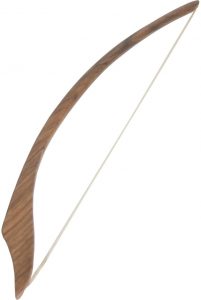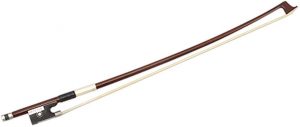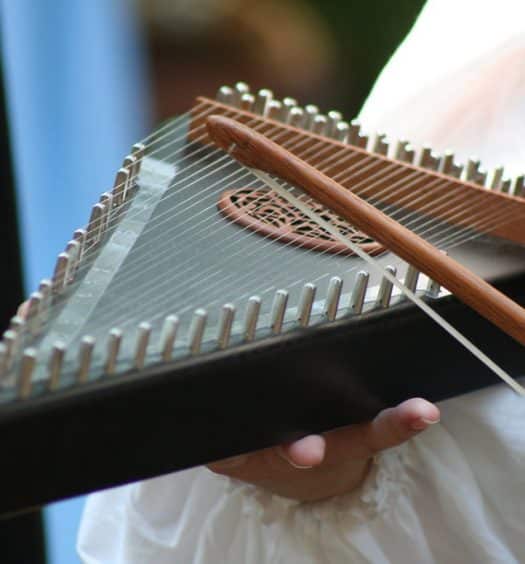What is a Psaltery Bow?
In this article, we take a quick look at psaltery bows – what they are and how they’re used.
A psaltery bow is exactly what it sounds like: a bow that is used to play a psaltery. However, unlike other stringed instruments, there are lots of options when it comes to choosing a bow to play the psaltery. There is no standard size or shape, unlike the violin, for example.

Why Would You Want to Use Psaltery Bows?
Of course, psalteries sound fantastic when they’re plucked but you can get amazing sound out of these instruments when you bow it too. Having a psaltery bow opens up this instrument to so many more sound opportunities.
What Makes a Good Psaltery Bow?
Typically, a psaltery bow is lighter and smaller than a bow for another instrument because there are a lot more movements up and down. On a violin, you’ll see strokes that are more lateral. With a psaltery, you need to extend the arm out further as you move the bow continually up and down. This is why a lighter and shorter bow is used.
Realistically, there are two categories of bows, ones that are violin bows bought in a store and homemade bows. Both are entirely capable of creating beautiful sounds on the psaltery.
Can I Use Violin Bows?
These bows are meant for use on a violin. A typical violin bow is around 30 inches but when you size down, you get bows that are suitable for playing the psaltery. A violin bow that is 1/16 is great for a psaltery as it measures around 17 or 18 inches.
Fractional-size violin bows have a few downsides but lots of positives. For example, the violin bow has been refined for many years and has a great sound. Also, there are lots of hairs on these bows and they’re flat, which means you get a more even and fuller sound. What’s more, a bow for a violin has a frog that is adjustable so you can alter the bow’s tension.
The disadvantages of a violin bow are that they’re expensive and aren’t that easy to find if you want to go for an odd size. Some people also don’t like how ‘modern’ violin bows look in comparison to the instrument.
Homemade Psaltery Bows
Homemade bows have the advantage of being simple and relatively low cost. The wood part can be made from scraps of leftover wood and some bow hair. With a homemade bow, you get to choose the shape, within reason. Some bow makers prefer a wider end that functions as a handle but others will make a symmetrical bow.
A disadvantage of a homemade bow is that the bow hair takes the shape of a rounded cord that is tied into a knot at each end. This means that not many of the bow hairs have contact with the string at the same time, so the sound is somewhat ‘thinner’ than with a violin bow. Another disadvantage is that you can’t alter the tension of the bow, unlike a violin bow.
Below are two highly ranked bows that we recommend for your psaltery.
Roosebeck Psaltery Bow Mongolian Horse Hair
This bow is a beautifully designed and well-built bow that is constructed from solid walnut. The bow hair is from Mongolian horsehair. This bow is approximately 15 ¼ inches in length but other lengths are available.
As with all bows, it’s common to get the occasional loose hair but this does not affect how you play the bow or how it sounds. This bow has a great sound but, like all bows, needs to be rosined before use. The hairs of this bow offer greater height which means there is a louder sound all while maintaining the psaltery’s haunting chord sounds.
Adjustable Bowed Psaltery Bow
This adjustable bowed psaltery has hair that is synthetic horsehair. This means that the tone is always consistent and will last a long time. The bow is lightweight and easy to maneuver on the strings. It’s around 18-inches in length, meaning that it’s one-tenth the size of a standard violin bow. Unlike the Roosbeck Psaltery Bow, this one looks like a violin bow and doesn’t have a unique shape.
Final Thoughts
If you’re new to bowing with a psaltery, why not try making a bow or two yourself? It’s actually quite easy. Although, it is a good idea to try both types of psaltery bow to see which you prefer.
If you’re not quite at the bow buying stage yet, check out our article on bowed psalteries.






